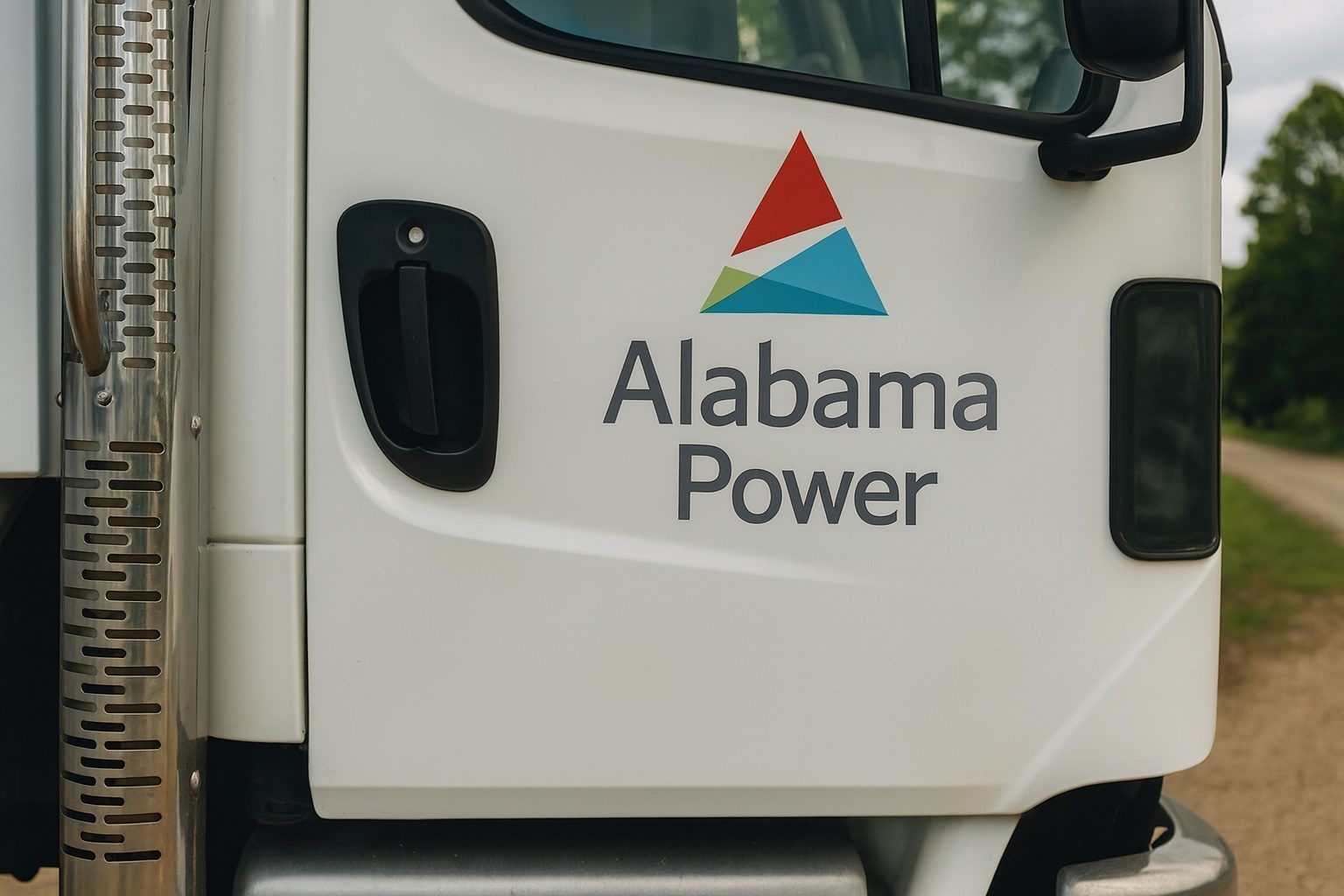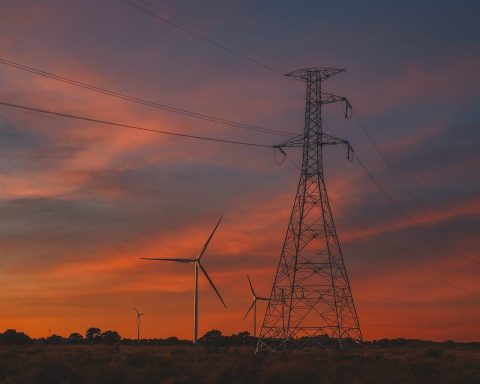MONTGOMERY, Ala. — November 25, 2025
Alabama Power says it plans to keep electricity rates flat for the next two years, pledging “rate stability through 2027” in a new filing with the Alabama Public Service Commission (PSC) as families across the state struggle with some of the highest power bills in the country. [1]
The move, outlined in documents dated November 21 and made public this week, would hold key rate formulas steady and use tax credits and storm reserves to offset costs — but it still needs regulatory approval, and it doesn’t guarantee that every customer’s monthly bill will stop changing. [2]
Key takeaways
- Rates frozen through 2027: Alabama Power proposes to keep major electric rate factors unchanged for roughly two years, covering 2026 and 2027. [3]
- No traditional rate cut: The plan is designed to prevent increases, not reduce current rates. Your bill will still depend heavily on how much power you use. [4]
- Complex behind‑the‑scenes math: The company would freeze or delay adjustments under several internal formulas — including Rate CNP and Rate RSE — and lean on federal nuclear tax credits and storm reserves to cover rising costs. [5]
- PSC still has to sign off: Commissioners will review the informational filing in the coming weeks. Their next public meeting is scheduled for December 2 in Montgomery. [6]
- Freeze comes amid record‑high bills: Alabamians currently pay the third‑highest average residential electric bill in the nation at about $173 per month, according to federal data. [7]
What exactly is Alabama Power proposing?
In an informational filing to the PSC, Alabama Power says it intends to “maintain current rate factors through 2027” to give customers “a measure of rate stability.” [8]
The proposal, outlined by executive vice president and CFO Moses Feagin, does not change the basic structure of your bill. Instead, it freezes or delays several internal formula rates that normally adjust costs in the background:
- Rate CNP, Part C – covers environmental and other government compliance costs (such as emissions controls and federally required upgrades). Alabama Power proposes to keep these factors unchanged through the end of 2027. [9]
- Rate CNP, Part A – recovers costs tied to new power plants and major facilities approved by the PSC. The company wants to delay Part A adjustments until January 2028, effectively postponing when customers start paying for some of those investments. [10]
- Rate CNP, Part B – another component of plant‑related costs. The filing would keep this factor steady through March 2028. [11]
- Interim Environmental Cost Recovery factor – an additional environmental charge the company wants to hold at current levels through 2027. [12]
ABC 33/40’s coverage notes that the plan also delays cost adjustments tied to the 895‑megawatt Lindsay Hill gas‑fired generating station near Billingsley until 2028. Earlier testimony suggested that acquisition could add several dollars per month to customer bills starting in 2027; under the new proposal, those increases would be pushed back. [13]
Put simply: instead of allowing these formulas to push bills higher over the next two years, Alabama Power is asking permission to hold them in place and backfill the gap with other sources of money.
How Alabama Power says it will pay for the rate freeze
The filing makes clear that keeping rates flat isn’t free — it just moves the cost around.
To make the freeze work, Alabama Power outlines a mix of internal belt‑tightening and accounting maneuvers, including: [14]
- Internal cost‑containment measures — the company says it will look for savings on its own operations.
- Using customer refunds from Rate RSE – any refund generated by the 2025 calculation under Rate RSE (Rate Stabilization and Equalization) would be applied to the Natural Disaster Reserve, which currently has a negative balance from past storms. That reserve is used to cover storm recovery costs.
- Tapping federal nuclear production tax credits – Alabama Power wants to use credits from 2025 through 2027 to offset the retail cost of serving customers, cushioning the impact of frozen rates on the company’s bottom line.
In a statement echoed across multiple outlets, the utility said it made the filing “as part of our ongoing discussions about ways to help customers manage their power bills,” adding that it knows “budgets are tight” and wants to provide more certainty at a time when many other household costs are rising. [15]
However, the filing also warns that weather, fuel markets, natural disasters and other unforeseen events could affect these commitments, meaning the plan isn’t an iron‑clad, no‑matter‑what legal freeze. [16]
Why now? Pressure over some of the highest power bills in America
The rate‑freeze announcement landed just days after a WBRC “6 On Your Side Investigates” report highlighted that Alabama has the third‑highest average residential electric bill in the country, at about $173 per month, based on U.S. Energy Information Administration data. [17]
That investigation found:
- Alabama Power customers make up more than half of that statewide total. [18]
- Alabama’s hot climate and widespread use of electric heating drive high usage — but even compared with other heavy‑consumption states, Alabama’s average bill is the highest. [19]
Consumer advocate Daniel Tait, president of Energy Alabama, told WBRC that Alabama Power customers are paying “some of the highest electric bills in the country” and argued that the utility’s allowed profit levels are a major driver. [20]
Regulatory structure is part of the story:
- Alabama has not held a traditional, public rate case for Alabama Power since 1982. [21]
- Instead, the PSC relies on formula ratemaking, especially Rate RSE and Rate CNP, which automatically adjust rates based on the company’s financial projections and investments. [22]
- A recent S&P Global report rated Alabama’s PSC as “above average” in terms of being investor‑friendly, noting that allowed equity returns under these formulas are generally higher than the national average for utilities. [23]
The PSC itself is in flux. New commission president Cynthia Lee Almond, appointed this year, recently told WBRC she is still learning the system but emphasized that what Alabama Power charges is “very important” in a state with many low‑income residents. [24]
Against that backdrop — high bills, a new PSC leader, and public scrutiny of profits — Alabama Power’s promise to freeze rates is as much a political and public‑relations move as it is an accounting exercise.
Will my power bill go down — or just stop going up?
For most customers, the proposed plan is about avoiding future hikes, not rolling back current charges.
Here’s what it likely means in practical terms, based on the public filings and reporting so far: [25]
- Base rate factors should stay where they are through 2027 if the PSC agrees, particularly the environmental and plant‑related pieces that would otherwise be poised to rise.
- Bills can still move around from month to month based on:
- How much electricity you use (especially during summer heat or cold snaps).
- Weather‑driven changes in demand.
- Any future adjustments the PSC may approve that fall outside the specific frozen formulas.
- Fuel is partly shielded but not immune. The company is offering to hold certain fuel‑related factors steady, but it also cautions that large swings in fuel markets or major storms could force a rethink. [26]
In other words: don’t expect a cheaper bill in January — but, if the plan is approved and conditions hold, you may avoid the kind of multi‑dollar increases that have hit in past years.
What happens next at the Alabama Public Service Commission?
Because Alabama Power’s filing is labeled “informational,” it does not trigger a full‑blown rate case on its own. Instead, commissioners and staff will review the proposal and decide what formal actions, if any, to take. [27]
What we know so far:
- The PSC’s next public meeting is scheduled for December 2 at 10 a.m. in Montgomery — a likely venue for at least some discussion of the plan. [28]
- Alabama Power is requesting explicit authorization for:
- Applying Rate RSE refund money to the Natural Disaster Reserve.
- Using nuclear production tax credits to offset costs that would otherwise flow into rates. [29]
For customers who want to weigh in, the PSC’s meetings are public, and residents can also contact commissioners directly — especially given that this proposal affects bills across Alabama for at least the next two years.
Inside the alphabet soup: Rate RSE, Rate CNP and why they matter
The tug‑of‑war over Alabama Power’s earnings and your bill plays out largely through two formulas: Rate RSE and Rate CNP. [30]
Rate RSE (Rate Stabilization and Equalization)
- Adjusts rates annually based on the utility’s projected return on equity (profit).
- If projected profits are higher than the allowed band, rates are supposed to go down; if lower, they can go up.
- Because it’s a formula, Alabama can adjust rates without a traditional rate case, something consumer advocates say limits transparency and public participation. [31]
Rate CNP (Certified New Plant)
- Allows Alabama Power to recover the costs of big capital projects — new plants, major upgrades — without opening a full rate proceeding.
- Split into different parts:
- Part A: new plant investment costs.
- Part B: other plant‑related adjustments.
- Part C: environmental and compliance costs. [32]
By freezing Part C and delaying Part A, the company is essentially promising not to pull some of the standard levers that would normally nudge bills upward over the next two years. [33]
That’s why the use of storm reserves and tax credits is so crucial: they help fill the financial hole created when Alabama Power voluntarily ties its own hands on these formulas.
How customers and advocates are reacting
Reaction has been mixed — cautious relief for some, skepticism from others.
On social media threads sharing the news, some Alabamians called the move “a step in the right direction,” while others pointed out that Alabama already has some of the highest power bills in the country and argued the company should lower rates, not just freeze them. [34]
Common themes in online comments and advocacy responses include:
- “Too little, too late.” Critics say a freeze simply locks in already‑painful bills and doesn’t address long‑standing concerns about profits and PSC oversight. [35]
- Monopoly frustration. Many commenters blame the lack of competition and Alabama’s formula‑based regulation for giving the utility too much power to shape its own earnings. [36]
- First step, not the finish line. Some advocates cautiously welcome the freeze but say they’ll keep pushing for a full rate case, deeper bill relief, and more investment in efficiency and rooftop solar to help customers use less power in the first place. [37]
For its part, Alabama Power insists it remains committed to “customers and the communities we serve” and frames the plan as a way to provide predictability while still maintaining reliable service. [38]
What to watch next
As of November 25, 2025, here are the big questions hanging over Alabama’s electric bills:
- Will the PSC endorse the full freeze package — including the use of Rate RSE refunds and nuclear tax credits — or seek changes?
- How long will the Natural Disaster Reserve take to rebuild, and will future storms force new surcharges despite the freeze? [39]
- What happens when the freeze expires in 2028? Delayed costs for projects like the Lindsay Hill plant will eventually need to be recovered from customers unless regulators chart a different course. [40]
- Will public pressure lead to a true rate case for the first time in more than four decades, or will Alabama continue to rely on formulas that many say favor investors over consumers? [41]
For now, Alabama Power’s promise offers short‑term stability in a state where power bills routinely strain household budgets. The real test will come in the PSC hearing room — and in the bills that land in mailboxes over the next several summers.
References
1. www.alreporter.com, 2. fmtalk1065.com, 3. www.alreporter.com, 4. fmtalk1065.com, 5. www.alreporter.com, 6. abc3340.com, 7. www.wbrc.com, 8. abc3340.com, 9. www.alreporter.com, 10. www.alreporter.com, 11. www.alreporter.com, 12. www.alreporter.com, 13. abc3340.com, 14. www.alreporter.com, 15. abc3340.com, 16. www.alreporter.com, 17. www.wbrc.com, 18. www.wbrc.com, 19. www.wbrc.com, 20. www.wbrc.com, 21. www.wbrc.com, 22. www.wbrc.com, 23. www.wbrc.com, 24. www.wbrc.com, 25. abc3340.com, 26. fmtalk1065.com, 27. www.alreporter.com, 28. abc3340.com, 29. www.alreporter.com, 30. www.wbrc.com, 31. www.wbrc.com, 32. www.alreporter.com, 33. www.alreporter.com, 34. www.reddit.com, 35. www.wbrc.com, 36. www.wbrc.com, 37. www.wbrc.com, 38. abc3340.com, 39. www.alreporter.com, 40. fmtalk1065.com, 41. www.wbrc.com










